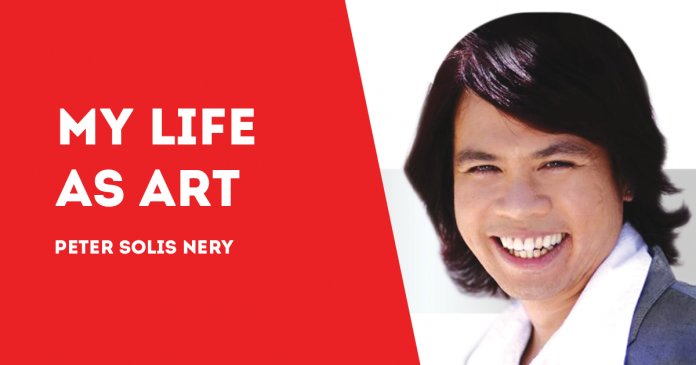
MULTI-talented Ronelo Ladiao often blogs about me.
Among my writer-friends, he’s the most updated about my projects.
For his blogs, he sends me questions that I actually enjoy answering.
Here’s Part 2 of his latest interview with me.
*
Iconic Ilonggo writer Peter Solis Nery in the time of COVID
An interview by Ronelo S. Ladiao
*
(RSL): What’s your favorite among these new PSN books?
*
(PSN): My books are all very good. It’s hard to pick favorites among the 2020 batch. But I really feel that Heart of My Youth is a wonderful treat. I mean, Wow! To have three books in one volume! And these books are a primer to the person that I have become. The introductions are also awesome. They put each book in perspective. Except for a big introduction, I didn’t do much here. Writer-friends contributed their essays out of love for me, and I just let everything fall into place. People will buy the textbooks because they’re a curriculum need. They’ll buy Celia’s Nothing’s Lost and the collected stories in Hiligaynon because they love good literature. But the memoirs are something else. If readers are like me, they’ll buy the memoirs because that’s how you get a great insight on the life of people. And in a way, that should inspire them to greatness. Because nobody publishes a memoir that’s less than inspiring.
*
(RSL): What can people especially the millennials learn from PSN books amidst the popularity of ebooks, social media trends, and Covid-19?
*
(PSN): This question is best answered by the memoirs. Heart of My Youth: The Purple Cat Saga inspires readers to persist and persevere. To defy the odds. To be brave and be bold. These are the values and aspirations that we need to survive beautifully in the time of COVID. The (Almost) Fabulous deals with life in the new millennium. Sure, I’m a quiquagenarian now, but how I deal with social media, with fads and trends, must be similar, if not the same with the confusion and perplexity of millennials dealing with social media stress and social media-induced depressions. I mean, they get depressions, I don’t. Because from my vast experience of life, I know how to deal with these things. Thus, if they are wise, they can read my book, and learn from my experiences. As far as ebooks and online publishing are concerned, we all are basically on the same level. That’s why I want to get ahead, and write another memoir from the point of view of a 21st century writer.
*
(RSL): How can these books provide healing, or lessen the stress brought about by the pandemic?
*
(PSN): My canonical works, and especially my stories, all deal with stressful societies. My stories are great literature because they allow my heroes to triumph over great adversities. The obstacles and conflicts may not be as great as the COVID pandemic (Nobody prepared me for this!), but the wise will always see parallelisms. Not a few readers saw the same desperation in the drought-stricken Guimaras of 2013 in “Father Olan, God, and the Rain” and the COVID pandemic that everybody is suffering this year. And because my story talks about faith and prayers, how far can it be from what people need to understand in the COVID situation?
The memoirs, on the other hand, are light reading materials that also teach us greatness, and the indomitability, of the human spirit. I don’t know how or why other people read memoirs. But I read memoirs to see how fucked up other people are, and how they overcome obstacles. I think that’s pretty healing and de-stressing — knowing that others messed up more than you did, and hey, they got over their fuck ups.
*
(RSL): Do you believe these books can be timeless?
*
(PSN): I really believe my books are timeless. My stories are the new classics. “Lirio” is 22 years old this year, and it is being studied by high school students all over the country. My last Palanca winner, “The Miracle at Ermita,” is popular because of its millennial slant, and because it also poses and answers the timeless existential questions. As for my memoirs, I am republishing my works from 1996, 1997, and 1998 because they are timeless! They are needed in this new generation, and they have gone out of print. Why would I republish them if they have become obsolete?
There is a reason why I have not published 30 Hiligaynon stories in the last 20 years. But you have got to wonder about my seven Palanca winners in the same 20 years. (And those stories that were Palanca prize-worthy but were passed over by the judges.) Because I write and publish books with a certain standard: they should be museum and library-worthy. I write a lot. I maintain a newspaper column. I occasionally blog, and I have regular lengthy Facebook posts. I do not expect my newspaper column, blogs, and Facebook status updates to be ‘timeless.’ But I have different expectations for my books. So yeah, for my books, I have considered the element of timelessness. (To be continued/PN)





